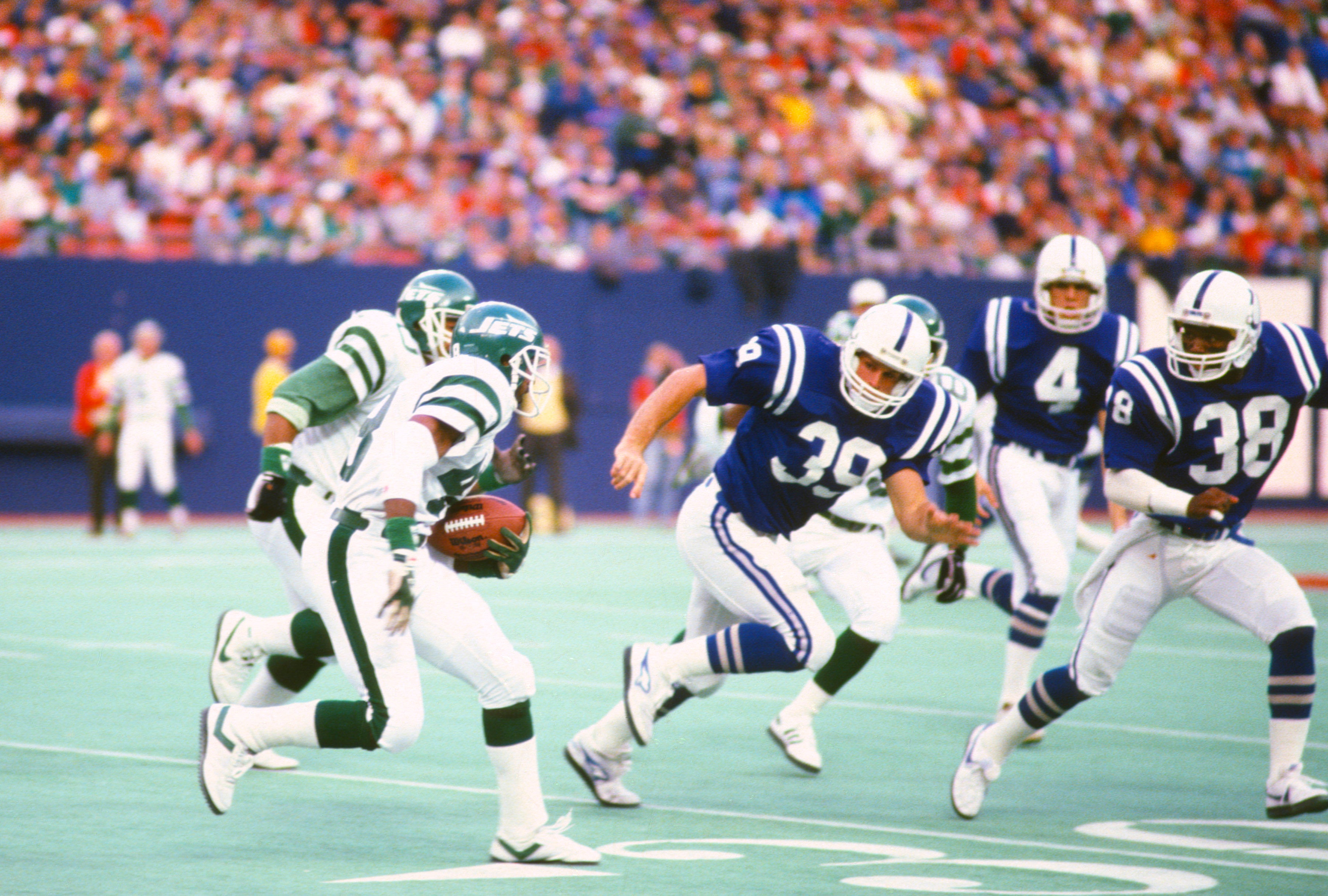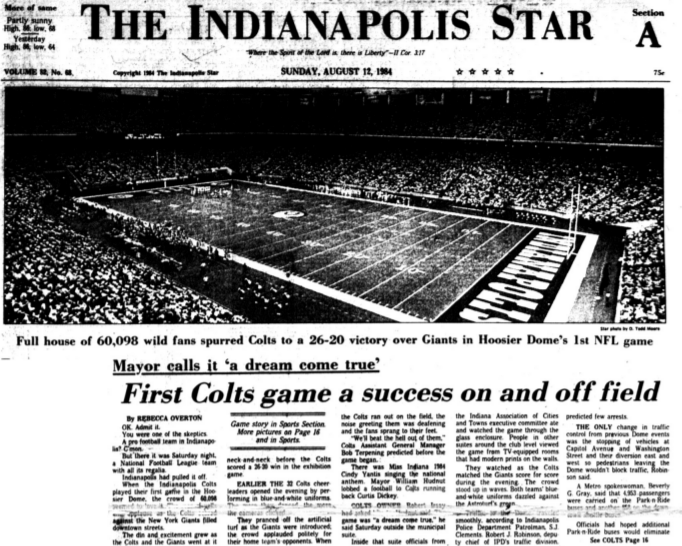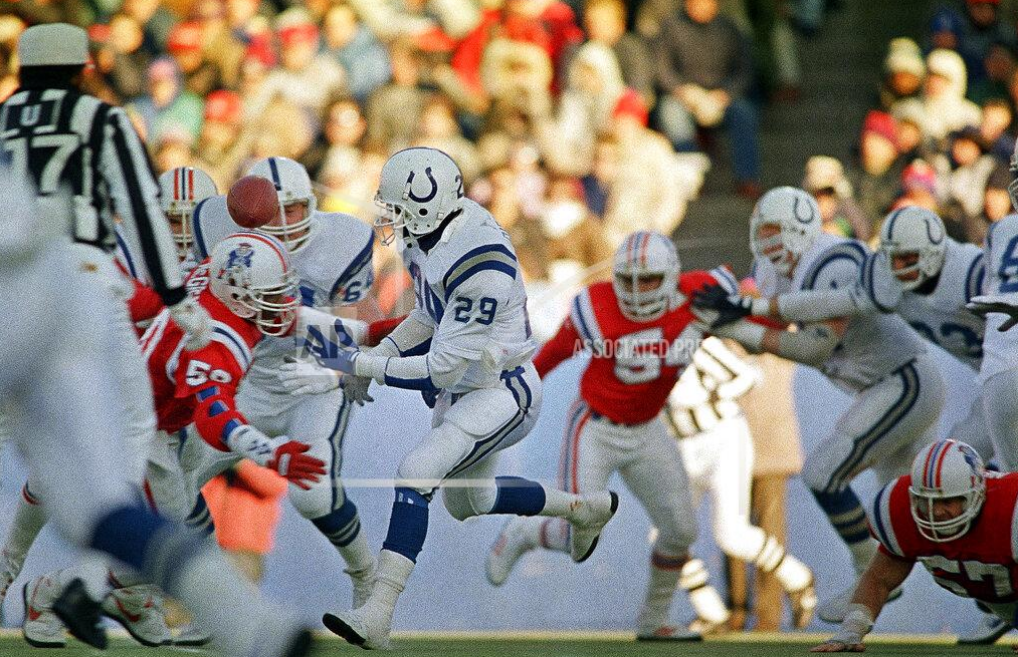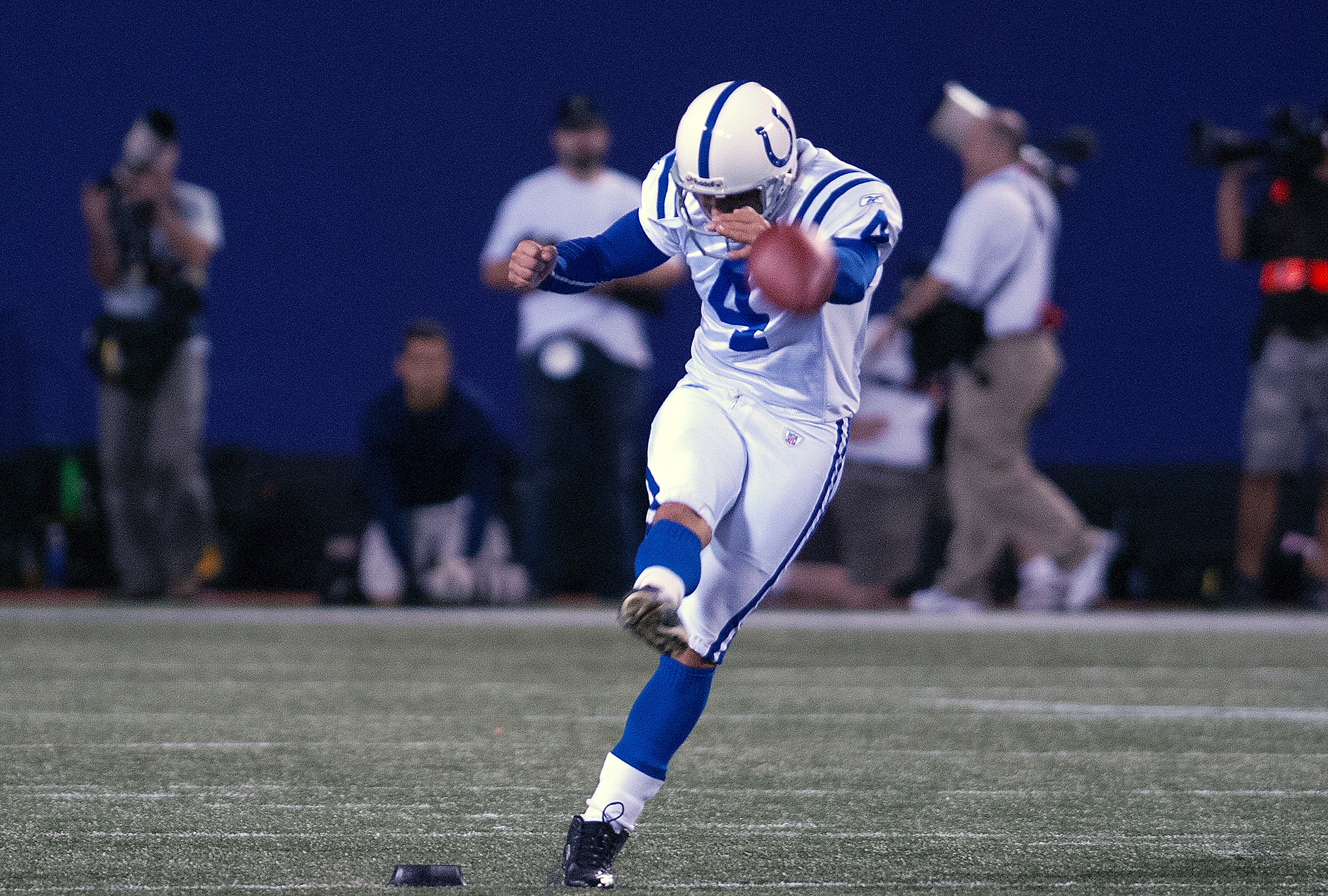March 28, 1984: When the Colts ditched Baltimore and moved to Indy overnight
INDIANAPOLIS (WISH) — Moving from one place to another is never easy, but depending on the move, you might get a good story to tell later.
Such was the case on March 28, 1984, when the Baltimore Colts made a surprise move overnight to Indianapolis.
Former team owner Robert Irsay, father of current owner Jim Irsay, and former Indianapolis Mayor William “Bill” Hudnut were behind the 600-mile move, which came with no public announcement.
In fact, it was a big, fat secret.
A report from the History Channel says Irsay had the movers “pack up the team’s offices in Owings Mills, Maryland, in the middle of the night, while the city of Baltimore slept.”
Robert Irsay took over the Colts in 1972 after trading his ownership of the Los Angeles Rams to then-Colts owner Caroll Rosenbloom. The Baltimore Colts were said to be “the best team in the NFL in the late 1950s,” and grew to “embody the working class spirit of Baltimore.”
After the Colts’ Super Bowl win in 1971 and the ownership trade in 1972, the team had a few winning years, but then the death spiral began.
Robert Irsay fired the coach who won the 1971 Super Bowl, trading quarterback Johnny Unitas shortly after, damaging the team’s reputation. The History Channel says by the late 1970s, “the franchise was so bad that when future Hall of Fame quarterback John Elway was drafted number one overall by the Colts out of Stanford in 1983, he refused to report to the team, saying he would play baseball for the New York Yankees instead.”
Elway would soon be traded to the Denver Broncos, where he would grow into one of the best NFL quarterbacks of all time.
Robert Irsay was also said not to be the easiest coach to work with, with an infamous temper and tendency to lash out at players and employees.
By the time of the big move, the team had six straight losing seasons. Average game attendance also dropped to 42,000 fans per game, which was steep compared to the 60,000 fans per game before Robert Irsay took over.
In 1984, Robert Irsay started negotiations with the city of Baltimore to pay for improvements to the stadium where the Colts played – but things did not go well. The Maryland state legislature on March 28, 1984, passed a law allowing Baltimore to authorize eminent domain and seize the Colts from Irsay.
But Robert Irsay wouldn’t let that happen.
Before things could escalate even further, he quietly took a deal offered by Indianapolis.
Forbes writes that Indianapolis wanted an NFL team to come to town. During this time, Indy was finishing construction of the Hoosier Dome, which happened to have blue-and-white seats, “the same color as the Colts.” It also provided luxury skyboxes to entertain corporate clients, an amenity Baltimore’s stadium didn’t have.
Jim Irsay, in a post on X, remembered the chaos of it all, saying “hell was breaking loose.”
Jim said he and then-Colts head coach Frank Kush were sent on a secret mission to check out the Dome. “My dad ordered me and Frank Kush to fly to Indy (on U.S. air) UNDER ASSUMED NAMES ‘to look at the stadium,’” he said.
Kush, the head coach of the Colts from 1982 to 1984, assumed the alias of “Mr. Owings,” which Jim Irsay jokingly indicated might have given them away. “I’m pretty sure the gate agent thought ‘Mr. Owings’ looked suspiciously like the head coach of the Colts,” he said in the post.
One week after his son’s secret trip to the Dome, Robert Irsay accepted the $12.5 million loan offered by the city, and said, “The Colts were moving to Indianapolis.”
Mayor Hudnut then called his neighbor, the owner of Mayflower Transit, and sent 14 – 15 Mayflower trucks to the Colts facility, free of charge.
The Mayflower drivers didn’t know where they were going until they arrived at the facility in Baltimore, and one report years later said the movers were members of the Hell’s Angels biker gang.
But the movers packed up as much as they could into the trucks, and with each driver taking separate routes, they made the 578-mile trek to Indianapolis.
USA Today writes that the president of Mayflower’s moving operations, Rick Russell, was having lunch at the Indianapolis Athletic Club on March 28 when he received a call from Mayflower’s chief executive officer Johnny Smith.
Russell was called back to the office immediately because it was time.
The Colts were coming.
March 28, 1984: When the Colts ditched Baltimore and moved to Indy overnight
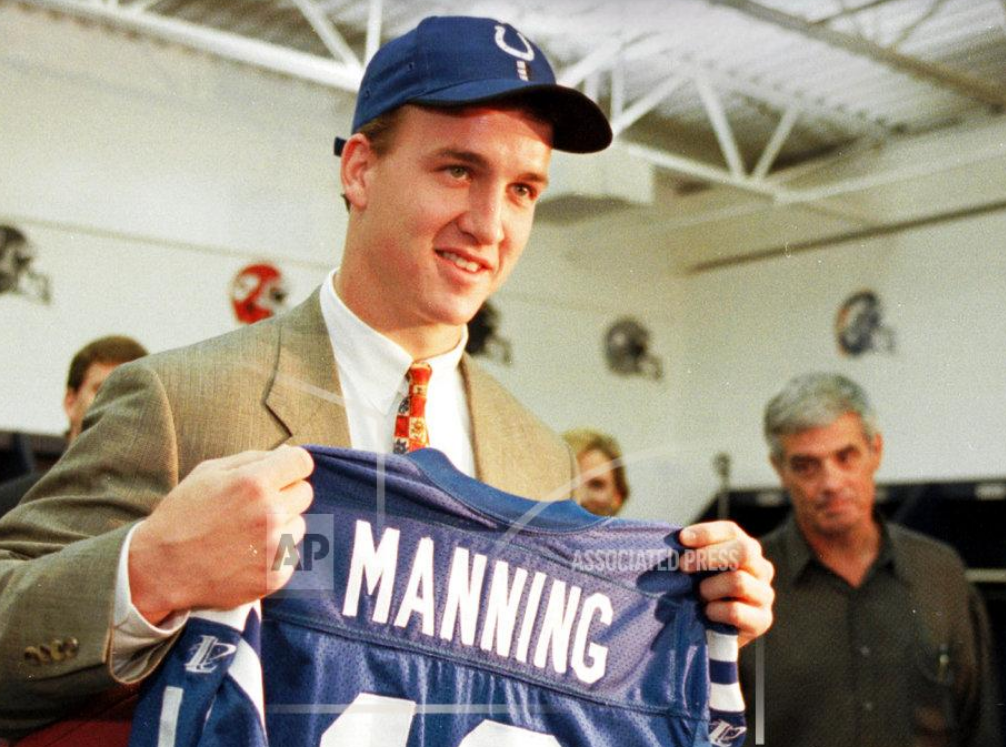 April 18, 1998: The Colts drafted quarterback Peyton Manning. Along with wide receiver Marvin Harrison and running back Edgerrin James, Manning gave the Colts one of the top offenses in the NFL. He went on to lead the team to numerous winning seasons. (Photo Credit: WISH Archives)
April 18, 1998: The Colts drafted quarterback Peyton Manning. Along with wide receiver Marvin Harrison and running back Edgerrin James, Manning gave the Colts one of the top offenses in the NFL. He went on to lead the team to numerous winning seasons. (Photo Credit: WISH Archives)
Colts facts and stats
- Total Colts seasons: 71 (1953-2023)
- Total capacity at Lucas Oil Stadium: 67,000
- Total capacity at Baltimore Memorial Stadium: 47,855 (later bumped up to 53,371)
- Super Bowl titles: 2 (1971 – Baltimore Colts; 2006 – Indianapolis Colts)
- Winningest coach: Tony Dungy (85 wins, 27 losses, 0 ties)
- Record going into 2024: 556 wins, 501 losses, and 8 ties.
- Most Career Yards Rushing: Edgerrin James, 9,226 (1999-2005)
- Most Career Yards Passing: Peyton Manning, 54,828 (1998-2010)
- Most Career Receptions: Marvin Harrison, 1,102 (1996-2008)
- Most Career Sacks: Robert Mathis, 123 (2003-16)
- Most Career Interceptions: Bobby Boyd, 57 (1960-68)
- Most Career Points: Adam Vinatieri, 1,515 (2006-19)
- Franchise Retired Numbers:
- 18: Peyton Manning
- 19: Johnny Unitas
- 22: Buddy Young
- 24: Lenny Moore
- 70: Art Donovan
- 77: Jim Parker
- 82: Raymond Berry
- 89: Gino Marchetti
